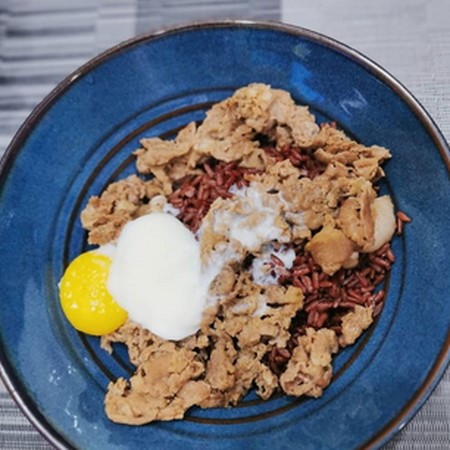【20-31】シンガポールの新型コロナウイルスの状況
2020年6月17日 さくらサイエンスプラン同窓生
科学技術振興機構(JST)中国総合研究・さくらサイエンスセンター(CRSC)では、2014年度より日本・アジア青少年サイエンス交流事業「さくらサイエンスプラン(SSP)」を実施し、科学技術交流を通じてわが国とアジアを中心とした各国・地域との連携・協力関係を深めてまいりました。各種報道の通り、現在、世界中で新型コロナウイルス感染症の流行が拡大しておりますが、本コーナーでは「さくらサイエンスプラン」に参加している各国・地域の関係機関・関係者より現地の新型コロナウイルス感染症について、その状況や対策等をリポートします。
1. 新型コロナウイルスの状況について
シンガポールで初めて確認された症例は、1月23日に武漢から渡航した66歳の旅行者です。2月4日には最初の集団感染が検出されました。
2020年4月12日、現時点での症例数について
総症例数:2299例
死者数:8名
治癒数:528名
陽性患者:1,763名
シンガポールは当初から新型コロナウイルス非常に深刻に受け止めています。新たな感染者の発見、隔離、接触者の追跡、隔離に最大限の努力を払っています。ソーシャルディスタンスを保ち、適切な自己衛生を実施し、手洗いや外出時のマスク着用なども政府より助言されています。ソーシャルディスタンスを保つための措置として、サーキットブレーカーが導入されました。必要のない職場、学校、保育所は閉鎖され、誰もが家にいるよう勧められています。(新型コロナウイルスとの)非常に困難な戦いであり、国の最善の努力にもかかわらず、症例数は引き続き増加しています。
2. このウイルス感染を抑えるために、政府はどのような対策をとっていますか?
シンガポール政府は、新型コロナウイルスの発生当初から、複数の行政機関によるタスクフォースを立ち上げました。特に政府が実施した対策について:
・ 継続中 フェイクニュースの拡大を抑制すること。新型コロナウイルスに関する情報は全て保健省の公式発表を参考にするよう国民へ通達。
・ 1月23日 濃厚接触者の追跡と隔離
・ 1月29日 自主隔離に対する報酬制度を発表
・ 1月30日 1世帯あたり4枚のフェイスマスクを配布
・ 2月2日 物流・観光産業への支援
・ 2月7日 DORSCON(シンガポールにおける感染症警戒レベル)レベルがオレンジに
・ 2月9日 政府は食料品の買い占めに対応し、食料の供給の安定性を強調
・ 2月10日 医療従事者の病院間移動の制限
・ 2月11日 シンガポールとマレーシアが二国間協力タスクフォースを設置
・ 2月13日 タクシー運転手、自家用車運転手への補助金を支給
・ 2月18日 企業、労働者、家庭、現場作業者を対象とした60億ドルの労働保証予算を発表(統一予算)
・ 3月2日 航空運送会社に対する労働者の研修費用支援を発表
・ 3月5日 シンガポールへの旅行者で、発熱などの症状を疑われる場合、鼻腔内綿棒検査を受けることが義務付けられる。
・ 3月10日 高齢者のイベントや活動の中止
・ 3月13日 250人以上のイベント・集会の中止
・ 3月14日 ソーシャルディスタンス関するガイドライン発表
・ 3月18日 マレーシア人労働者への短期住宅・宿泊費補助金の支給
・ 3月19日 教育機関における予防対策の強化
・ 3月26日 懇親会を10人以下に制限するよう勧告。480億ドルの保証予算の発表(レジリエンス予算)。
・ 3月31日 シンガポール軍が主要な活動をすべて延期
・ 4月1日 全ての教育機関において週1日の家庭学習を実施
・ 4月6日 50億ドルの保証予算(連帯予算)を発表
・ 4月7日 サーキットブレーカー導入
3. 今回のパンデミックにおいて国として学んだこと
シンガポールは、隣国と緊密に協力し、お互いの観点から学ぶことができます。シンガポールはWHOのリーダーシップ力とその専門知識を大いに評価しています。都市国家であるシンガポールは感染症に対して非常に脆弱であり、SARSやH1N1の発生から多くの経験を学び、長年にわたりパンデミックへの備えにあらゆる国リソースを投入してきました。
4. このウイルス感染は、あなたの日常生活や仕事にどのような影響を与えていますか?他にも意見がある場合、ぜひ付け足してください。
シンガポールで新型コロナウイルスが感染拡大したことにより、職場では可能な限り在宅勤務を実施することが義務化されました。シンガポールで導入された感染防止対策である"サーキットブレーカー制度"が実施されたことで、学校でも5月4日までは完全に在宅学習に移行しています。教師として、授業の配信をオンライン化することが課題となっています。私はほとんどの時間を在宅勤務で過ごし、新学期に向けてeラーニングの授業を開発しています。
在宅勤務の導入に伴い、自宅と仕事の境界線を明確にすることが難しくなりました。夜遅くまで仕事をしていたり、週末に仕事をしていたりすることもよくあります。そのため、在宅勤務で燃え尽き症候群にならないよう、自己管理と時間管理を徹底する必要があります。
ソーシャルディスタンスを置くことで、すべてのシンガポール人は生活スタイルに関して妥協しなければなりません。健康上の理由から高齢者の親戚を訪問したり、社交的な集まりに参加しないよう国からもアドバイスされています。また運動習慣も邪魔され、私たちは家で代替できる運動や方法を見つけなければなりません。誰もが直面する不確実性と脆弱性は、私たちが人生で当たり前だと思っていることを反省し、感謝することを可能にしてくれます。
社会の結束力と自己責任が必要とされる時代であり、パンデミックをコントロールするために誰もが自分の役割を果たさなければならないのです。
※本稿はさくらサイエンスプラン同窓生からの寄稿文を中国総合研究・さくらサイエンスセンターが日本語訳したものである。
●英文オリジナル
Covid-19 in Singapore
1. A brief situation of the Covid-19 infection in your country.
The first confirmed case who was a 66 year old tourist from Wuhan was found in 23 January.
The first cluster of local transmission detected on 4 Feb. Statistics up to date:
As of 12th April 2020
Singapore
Total cases: 2299
Total deaths: 8
Total recovered: 528
Active cases: 1763
Singapore has taken Covid-19 very seriously from the start. The utmost efforts are taken into detecting new cases, isolating them and to trace their contacts and quarantine them. We have been advised to keep safe distances apart, observe proper self-hygiene, wash hands and to wear masks when going out. Substantially tighter safe distancing measures were introduced in the form of a circuit breaker. Non-essential workplaces, schools and childcare centres have been closed, and everyone has been advised to stay home. It is a very difficult fight and the number of cases continue to rise despite the country's best efforts.
2. What are the measures taken by your government to control this virus infection.
The Singapore government set up a multi-agency task force at the start of the outbreak. The government had implemented the following:
・ Ongoing: Curbing spread of fake new. Advisory to view all official announcements from the Ministry of Health website
・ 23Jan: Contact tracing and isolation of high risk groups
・ 29 Jan:Quarantine order allowance scheme introduced
・ 30 Jan: Distribution of 4 facemasks per household
・ 2 Feb: Stabilisation and support package for transportation and tourism industries
・ 7 Feb: DORSCON level raised to Orange
・ 9 Feb: Government emphasis on food stability in response to panic buying of groceries
・ 10 Feb: Movement of healthcare workers across different hospitals restricted
・ 11 Feb: Singapore and Malaysia set up cross country task force
・ 13 Feb: Grants given to taxi drivers and private car drivers
・ 18 Feb: $6 billion dollar assurance package (Unity budget) for enterprises, workers, families and front line workers
・ 2 Mar: Funding for air transport companies to train workers
・ 5 Mar: Travellers to Singapore who appear feverish to undergo compulsory nasal swab test
・ 10 Mar: Suspension of activities for seniors
・ 13 Mar: Suspension of events and gatherings of 250 people or more
・ 14 Mar: Social distancing advisory
・ 18 Mar: Provision of short term housing and accommodation subsidy for Malaysian workers
・ 19 Mar: Tightening of preventive measures in schools
・ 26 Mar: Advisory to limit social gathering to 10 people or less. $48 billion dollar assurance package accnounced (Resilience budget).
・ 31 Mar: Singapore armed forces to postpone all major activities
・ 1 Apr: All schools conduct one day of home based learning per week
・ 6 Apr: $5 billion dollar assurance package (Solidarity budget) announced.
・ 7 Apr: Circuit breaker implemented
3. What has been learned in your country with regard to this pandemic.
Singapore cooperates closely with our neighbours and to learn from one another's perspective. She greatly appreciates the leadership and expertise of the WHO. As an urban city, Singapore is very vulnerable to infectious disease spread and much experience had been learnt from the SARS and H1N1 outbreak and has invested resources in pandemic preparedness over the years.
4. How is this virus infection affecting your daily life and work? You might like to add in your other opinion.
The virus spread in Singapore has made it compulsory for workplaces to implement telecommuting where possible. With the circuit breaker measures that have been implemented, schools are converting to full home based learning till 4 May. As a lecturer, we are tasked to convert our teaching delivery to an online format. I spend most of the time telecommuting from home and developing eLearning lessons to prepare for the new academic semester.
With the implementation of working from home, it becomes hard to differentiate the boundaries of home and work. I often find myself working way into the night and often on weekends. This requires greater self-discipline and time management to prevent burnout when working from home.
The social distancing measures have required every Singaporean to compromise with regard to lifestyle. We are advised not to visit the elderly relatives for health reasons, and not to have any social gatherings. Exercising routines become disrupted and we have to improvise and find alternatives at home. The uncertainty and vulnerability that we all face allows us to reflect on and appreciate the things that we often take for granted in life.
It is a time where social cohesion and responsibility is needed and everyone has to do their part to control the pandemic.
Contributed by an alumnus of SSP from Singapore

This is a photo of my cat Valen peeking upside down from his cat tree. My three cats are able to spend more quality time with us during the circuit breaker period. They seem to be happier and more interactive with us than usual. Great to have three cats when you're all cooped up at home!

I have started cooking at home ever since the pandemic started. This is my attempt at teriyaki gyudon (Beef rice). I am going to make oyakodon next. I have cooked many versions of oyakodon before but none of it tastes quite like the authentic Japanese version. Being at home allows me time to experiment with cooking to occupy my time better!